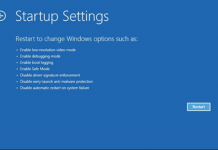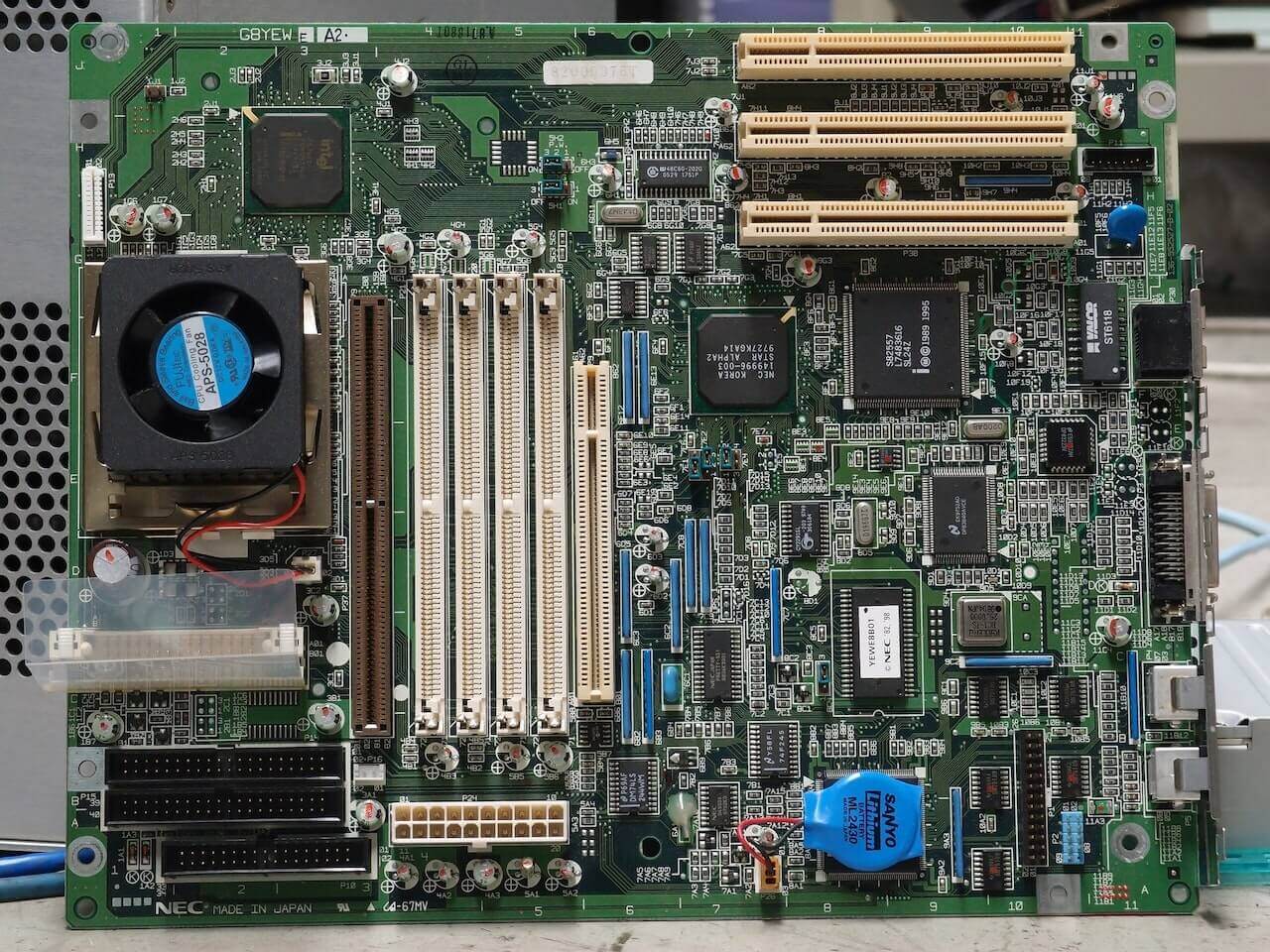Is it worth upgrading to 24GB of RAM, or is 16GB sufficient? While it may seem like more RAM should always translate to better performance, that’s not necessarily the case. Depending on your needs, the additional cost of upgrading to 24GB of RAM may be unnecessary.
We have assessed the advantages and disadvantages of both RAM options and identified the specific use cases that will benefit the most from having more RAM. Our comparison will center on the Apple M2 MacBook Air, where all variables are constant except for the RAM capacity and cost. But, before diving straight into How Much RAM is Needed for Your Mac in 2023, let’s discuss what is RAM and why is it important.

What is RAM and why is it important?
RAM (Random-access memory) serves as temporary storage for data, enabling the processor to readily access frequently used information. The greater the RAM capacity, the more data can be stored temporarily, resulting in improved performance for demanding applications and increased multitasking capabilities on your MacBook, iMac, or Mac Mini.
Conversely, insufficient RAM can cause your device to slow down. While additional RAM may not necessarily increase the speed of your MacBook, iMac, or Mac Mini, it can make it more future-proof, as programs continue to demand more memory. What is sufficient now may become insufficient in the future.
It is important to note that expanding the RAM of your MacBook, iMac, or Mac Mini is unattainable, making it crucial to make the right choice when buying one. The reasonable choice leans on your usage situation. All Apple MacBook, iMac, or Mac Mini models are sufficient for basic tasks and light photo editing. However, you will require more RAM to do more advanced tasks such as video editing, running virtual engines, or making 3D models.
Also Read- How To Access macGPT From Your Mac Menu Bar
Comparing MacBook Air M2 vs MacBook Air M1
In consideration of the subject matter, we will ascertain the necessary amount of RAM required for your explicit purpose. This comprehensive guide offers thorough insights into the importance of RAM in video editing, gaming, and other relevant activities. We will also recommend some of the top-performing Mac models for resource-intensive tasks. Let’s start by comparing the MacBook Air M2 with M1 concerning price and performance.
The MacBook Air M2 is the latest accumulation to Apple’s ultra-thin and lightweight laptop series. It boasts the powerful Apple M2 chip, which is also featured in the new MacBook Pro M2. This makes it one of the most high-performing and best overall laptops available for purchase, despite its hefty starting price of $1,199.
However, it’s important not to overlook the earlier MacBook Air M1. Simply because there is a newer version on the market. Despite being a generation older, the MacBook Air M1 still delivers exceptional battery life. And performance, exceeding even some of the best Windows laptops. Considering these facets and its relatively affordable cost of $999. It’s understandable that some might consider the MacBook Air M1 to be the better deal.

Also Read- How To Remove GoToMeeting From My Mac
Performance Differences Between Apple’s M1 and M2 Chips
The M2 chip, a more advanced version of the M1 chip, originated for Mac computers. And is presently available in the latest MacBook Air and the 13-inch MacBook Pro. While the distinction between the M1 and M2 chips is not as consequential as the disparity between the Intel chip and the M1 chip. It nonetheless proposes substantial upgrades in performance.
Corresponded to the M1, the M2 provides sounder multicore CPU performance, additional GPU cores, improved memory bandwidth and graphics performance, faster transistor count, swifter performance, increased memory bandwidth, and additional neural engine operations. Devices with an M2 processor will have a sounder performance than those with older silicon though will come with a higher price tag.
Assessing what device performance specs are significant to you before making a purchase decision is vital. If you don’t require speed, more memory, or advanced features, it may make sense to hold money and choose a device with the M1 chip.
Also Read- How To Back Up Your Mac With Time Machine In macOS Ventura
Maximize MacBook’s Performance
In the past, Mac computers were confined to 4 GB of RAM, but current MacBook models offer 16 GB of standard memory. Nonetheless, even with this boost in memory capacity, performance problems may yet emerge over time. One conceivable culprit is lofty RAM usage, which does not always indicate that you require more memory.
In addition to that, the high-end MacBook Pro authorizes the system to use a faster SSD to swap data with the memory when needed. This means that if the computer runs out of space in the RAM (memory), it can temporarily use the SSD as additional memory. Further, macOS (the operating system for Macs) has been optimized to utilize the unified memory pool efficiently. Unified memory is a feature that allows the CPU, GPU, and other components to share the same memory pool, which can lead to better performance.
Consequently, when deciding whether to pay $400 for a 32GB memory upgrade, one should assess the extent and efficacy of macOS optimization.
Also Read- Why Microsoft Edge Is Not The Best Option For Mac Users
Performance Comparison
Real-World Performance Test By Apple
According to real-world performance tests conducted by Apple, the new MacBook Air boasts an impressive boost of nearly 40% when it comes to editing complex video timelines in Final Cut Pro, and up to 20% faster for applying filters in apps like Photoshop. These upgrades are particularly significant for users handling large assets.
Furthermore, the Apple M2’s Neural Engine is touted to be up to 40% faster than its predecessor. Thus making it an excellent choice for AI-related workloads. The full extent of these upgrades can be experienced with apps optimized for Apple Silicon. However, storage options remain unchanged, ranging between 256GB and 2TB.
Real-World Performance Comparison of MacBook for Video Editing and Encoding
According to the trustworthy source, a performance test was executed to do a comparison of the M2 MacBook Air’s real-world performance, where they ran a standard set of exporting, stabilizing, and coding functions on the device using HandBrake 1.5 and iMovie. While CPU benchmarks provide a theoretical idea of the machine’s speed. It is crucial to know how the Macs will perform in real-world scenarios.
The test results showed that there was barely any difference in the M2 MacBook Air’s speed when exporting a 4K file at High settings. However, the cheaper model significantly underperformed in every other test. When exporting at ProRes settings, the cheaper model took 27.6 percent longer. Moreover, stabilizing an iMovie clip took 43 percent longer than the M1 model from 2020, which was also an entry-level unit that cost only $999.
The 256GB model performed 27.2% and 20.4% less well in the HandBrake tests than the 1TB model, correspondingly. In both instances, it moved faster than its subsequent models more closely resembling the M1 type. These findings suggest that if you are a professional user who works with video editing or encoding software. It is worth investing in the higher-end M2 MacBook Air model with more storage and better GPU performance.
Also Read- 7 Tips To Speed Up Mac After Installing macOS Ventura
Comparison Based on Price
Currently, there are three MacBook Air models available to purchase:
- M1 MacBook Air with a 7-core GPU: $999
- M2 MacBook Air with an 8-core GPU: $1,199
- Top-of-the-range M2 MacBook Air with 10-core GPU: $1,499
For only $200 more than the M1 model, the latest MacBook Air comes with an M2 processor that boasts more GPU cores, a larger screen, and a fully redrafted design. It appears like a superb offer. Nonetheless, it’s worth mentioning that the prior M1 MacBook Air with an 8-core GPU possessed a 512GB SSD, whereas the newer M2 MacBook Air only provides a 256GB SSD, which could be the reason behind Apple’s price cut.
However, if you mainly use your MacBook for simple everyday tasks like browsing the web, checking emails, or streaming videos, you might want to think twice before splurging on the pricier M2 model. The more affordable M1 MacBook Air, which starts at $999, can easily handle all these tasks without breaking a sweat. So, it’s worth considering whether the added features of the M2 MacBook Air are essential for your needs.
If you are a professional user who works with video or photo editing software. Then, the M2 MacBook Air is undoubtedly worth the investment corresponding to its predecessor. For those with a flexible allotment, opt for the higher-end model with a 10-core GPU. And additional storage would be a perfect pick for better graphics performance.
Also Read- 8 Reasons Why Microsoft Edge Is not the best option for Mac users
Can You upgrade the RAM on MacBook Pro 2023?
Apple’s transition to using a unified memory architecture in its latest MacBook Pro models of 2023. It is a significant departure from the traditional approach of utilizing separate RAM sticks. The Apple Silicon processors in these Macs incorporate the RAM as part of the M2 Pro or M2 Max chip. Thus enabling faster data exchange between the CPU, GPU, and Neural Engine. While this integration could lead to improved performance and efficiency. It also means that users cannot upgrade the RAM themselves, which may be a downside for some.
It’s worth stating that Apple has made it crystal clear that RAM and SSD upgrades are not likely after purchasing a MacBook Pro in 2023. Consequently, it’s crucial to make the proper choice when picking the model that serves your needs. Nonetheless, if you encounter yourself in need of extra SSD space after purchasing a MacBook Pro. Your sole option is to lean on external storage devices, which can be a cumbersome solution.
Also Read- How To Transfer Screenshots From A Nintendo Switch To A Mac
Do You need 8GB or 16GB of unified memory?
In today’s digital age, the question of how much RAM one needs is a common dilemma when purchasing a new MacBook. The good news is that for most people, the base model of the M1 MacBook Air with 8GB of RAM is powerful enough for most tasks, including web browsing and light work. Synthetic benchmark tests have shown that it’s quite difficult to slow down the device even with lots of multitasking. Therefore, the extra $200 to upgrade to 16GB of RAM may not be worth it for most users.
However, if you’re intending to use your MacBook Air for more demanding tasks. Or if you’re looking for a device that’s future-proof and has a better resale value. Then upgrading to 16GB of RAM might be a smart choice. With 16GB of RAM, all software suites run perfectly, and you’ll have enough memory to run even more apps and multiple tasks simultaneously. Ultimately, the decision to choose the 16GB RAM version depends on your specific usage situation and priorities.
Also Read- 4 Quick Ways To Set An Alarm On Your Mac
Is it worthwhile to switch from 16GB to 32GB of RAM?
For casual users and gamers who engage in web browsing, gaming, and moderate productivity applications. Such as MS Office and Adobe Suite for casual creative work, 16GB of RAM should suffice for the next few years. However, if you engage in heavy workloads such as development or professional-level creative work like photo and video editing. Along with animations, opting for 32GB RAM would be the better choice to last for the next 2-4 years.
Also Read- Freeform Not Syncing Across iPad, iPhone, And Mac
Final Thoughts
The new MacBook Pros present a scope of memory options, from 16GB to a whopping 96 GB. Nonetheless, not all options are available for both machines. The M2 Max versions of each MacBook Pro can acclimate up to 64GB or 96GB, while the standard M1 and M2 MacBook Pros can solely go up to 16GB.
It’s important to note that the RAM is unified memory, which implies it is shared between the CPU and GPU. This can concern performance, so it’s crucial to pick the suited amount of RAM based on your necessities.
For productivity users, 16GB should suffice. However, if you’re a creator who works with demanding applications like video editing or graphic design, you should opt for 32GB or more. And for the most demanding users who require maximum performance and have the budget can opt for the 96GB option.
Finally, you know how much RAM Needed for Your Mac in 2023. Apple’s unified memory architecture and memory management in macOS authorize for excellent memory performance on their latest Macs. Especially the high-end MacBook models. While it’s essential to consider the amount of RAM needed for intense workflows. It’s also important to understand that other hardware components can be a bottleneck for performance. Ultimately, most users will find that 16GB of RAM is sufficient for their needs. And only those with extremely intense workflows may require 32GB. This can be achieved by opting for the M1 Max chip.
The improved SSD and memory of the 14 and 16-inch MacBook Pro models result in faster memory swapping, especially in the latter. Such enhancements account for the impressive memory capabilities of the 16GB version, which should be adequate for the majority of users.
The result shows that 16GB of RAM surpasses 8GB in terms of capacity, making it the better choice. While 8GB of RAM may suffice for simple tasks, it struggles to handle multiple programs simultaneously. Although 16GB of RAM may not always be necessary, it proves advantageous during demanding situations.
For optimal gaming performance, it is advisable to have 16GB of RAM as it surpasses 8GB in capability. Moreover, multitasking during gameplay will not impact performance with 16GB of RAM.
Greater RAM capacity leads to improved performance. With 32GB RAM, you can work or play at a faster and smoother pace than with 16GB RAM. Although 32GB RAM is costly, 16GB RAM comes at a reasonable price. For gaming purposes, 16GB RAM is adequate.



































